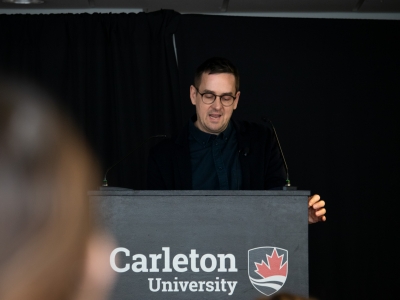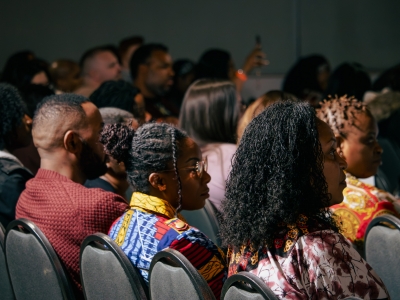
Canada Research Chair Merlyna Lim
Story By Karen Kelly
Photo by Bryan Gagnon
As Canada prepares for a federal election, Canada Research Chair Professor Merlyna Lim is analyzing how social media users—human and otherwise—are mobilizing emotions rather than facts.
In the months leading up to the Canadian election, Facebook accounts with names like “Trudeau Has Got To Go”, “Overthrow Trudeau”, Justin Trudeau is an Idiot” focus on ridiculing the Prime Minister.
On the opposite end of the political spectrum are accounts attacking Conservative Leader Andrew Scheer, with names such as “Andrew Scheer Is An Idiot”, “Scheer Nonsense”, and “Schmeer 2019”.
Political cartoons and jokes are an age-old tradition. But Communication and Media Studies Professor Merlyna Lim says that in the age of social media, hateful speech and misinformation spreads incredibly quickly—intensifying the polarization within politics.
For instance, prior to the 2016 U.S. election, Lim used algorithms to track an explosion of social media posts from alt-right accounts and fake accounts (bots). In 2017, she saw another surge in advance of the French national election.
As Canada approaches its national vote, Lim and her students are looking out for the same phenomenon.
“We live in a society where irrational feelings are now more valued than information,” explains Lim, whose Canada Research Chair in Digital Media and Global Network Society was recently renewed. “We don’t vote for people based on experience or policies, but because of their persona. It’s a form of fan-based activism.”
Lim’s latest research is looking at antagonistic communication in social media—what she calls the “freedom to hate.”
“People are separating themselves into algorithmic enclaves where they are brought together because they hate the same thing,” she explains. “The algorithm is changing the way we connect to each other, but it doesn’t mean that algorithms predetermine whom we want to be connected with. Human contact still has agency. The complexity of this relationship is what I’m interested in.”
The Missing Middle
Platforms like Facebook created sorting algorithms primarily to help businesses target their customers. These algorithms also give people limited choices. When it comes to politics, Lim says that poses a problem.
“They are biased towards the superlative. They don’t want to accommodate neutral, moderate, or ambiguous feelings; they want to excite you,” she explains. “Social media amplifies the most extreme content. This explains how you end up with a cute cat and a racist tweet in the same timeline.”
For instance, Lim is following the gilet jaunes (yellow vests) movement in France. On the ground, the protestors are grassroots and diverse, with a focus on the economy and social justice. But Lim says their online presence doesn’t reflect that.
“The Twitter accounts associated with the movement are anti-Macron, anti-Muslim and anti-Semitic,” says Lim. “It’s interesting how the political landscape accommodates that.”
Here in Canada, the RCMP has reviewed comments on the “Yellow Vests Canada” Facebook page that called for the death of Prime Minister Justin Trudeau.
Lim believes this reflects the phenomenon of the “missing middle”—the majority of people who care about issues, but are not represented by the extremes.
“The number of people who care is much larger, but you wouldn’t find them easily on social media,” says Lim. “But if you dig deeper, then you see them in smaller spaces. That gives me hope—these are spaces of hope.”
An Eye on the Globe
Over the past five years, Lim focused on how social movements used both digital media and grassroots action to communicate. For instance, while the media described protests in Hong Kong, Malaysia and the Arab Spring as social media revolutions, Lim discovered churches, mosques, coffee shops and in-person meetings formed the foundation of these movements.
These days, she is expanding her scope to observe alt-right and other populist movements across the globe. As the founder of the ALiGN media laboratory, she and her students are studying the relationship between media and communication technologies— especially digital media—and collective/social movements.
“I like playing the detective by tracking social media usage across the world, but also interviewing people in the field,” she says.
She framed her previous research as being about “Roots, Routes and Routers.” For the next five years as Canada Research Chair, she is pondering the title “Rhythms and Algorithms.” In this research, she attempts to understand how both progressive and regressive movements come into being by analyzing the (social and political) rhythms of society, as well as the algorithmic patterns of social media.
In the end, she contends that algorithms don’t cause discrimination, radicalization and other social problems—they are interwined with the rhythm of society.
Friday, June 14, 2019 in Communication and Media Studies, News
Share: Twitter, Facebook



